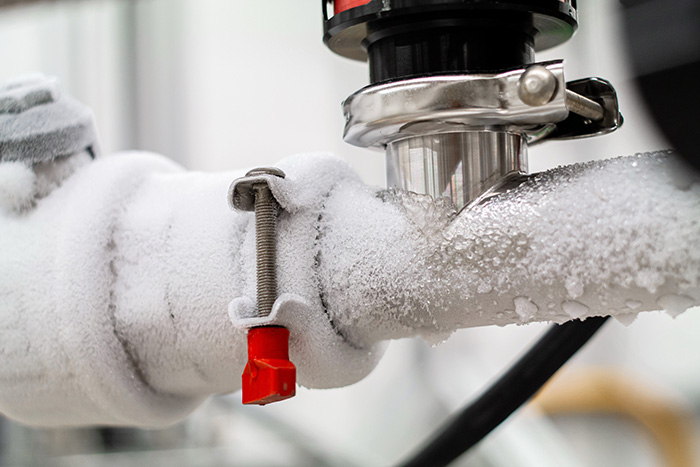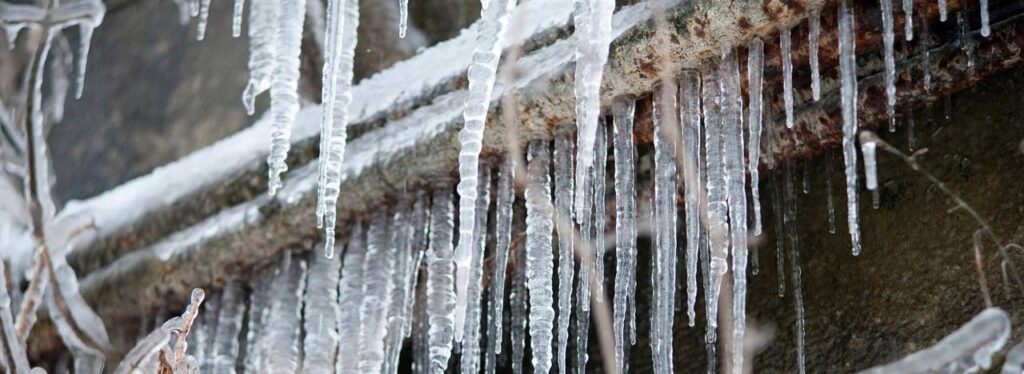Tips for Avoiding Frozen Pipes in Winter: Specialist Insights
Tips for Avoiding Frozen Pipes in Winter: Specialist Insights
Blog Article
We have unearthed this post involving 6 Ways to Prevent Frozen Pipes down the page on the net and thought it made perfect sense to quickly share it with you on my blog.

Cold weather can ruin your pipes, specifically by freezing pipes. Below's how to avoid it from taking place and what to do if it does.
Introduction
As temperatures decrease, the risk of frozen pipes increases, possibly causing pricey repair services and water damages. Comprehending exactly how to stop icy pipelines is critical for homeowners in chilly environments.
Avoidance Tips
Insulating susceptible pipes
Wrap pipelines in insulation sleeves or utilize warmth tape to shield them from freezing temperature levels. Focus on pipelines in unheated or external areas of the home.
Heating techniques
Keep indoor areas appropriately warmed, particularly locations with plumbing. Open cupboard doors to enable warm air to distribute around pipelines under sinks.
Exactly how to recognize icy pipelines
Seek reduced water flow from taps, unusual smells or noises from pipes, and visible frost on exposed pipes.
Long-Term Solutions
Architectural adjustments
Think about rerouting pipelines far from exterior wall surfaces or unheated locations. Include additional insulation to attics, cellars, and crawl spaces.
Updating insulation
Buy high-grade insulation for pipes, attic rooms, and wall surfaces. Proper insulation helps maintain constant temperature levels and lowers the threat of frozen pipes.
Securing Outdoor Pipes
Garden hoses and outdoor faucets
Disconnect and drain pipes garden pipes prior to wintertime. Set up frost-proof faucets or cover outdoor faucets with protected caps.
Recognizing Frozen Pipes
What creates pipelines to freeze?
Pipes ice up when revealed to temperatures listed below 32 ° F (0 ° C) for extended periods. As water inside the pipes ices up, it expands, putting pressure on the pipe wall surfaces and potentially triggering them to rupture.
Dangers and damages
Icy pipelines can cause water interruptions, home damages, and expensive repair services. Burst pipelines can flood homes and trigger substantial structural damage.
Indications of Frozen Pipeline
Identifying frozen pipelines early can avoid them from bursting.
What to Do If Your Pipelines Freeze
Immediate activities to take
If you presume frozen pipelines, maintain faucets open to relieve pressure as the ice thaws. Utilize a hairdryer or towels soaked in warm water to thaw pipelines gradually.
Verdict
Preventing icy pipelines requires aggressive steps and quick responses. By comprehending the causes, indicators, and preventive measures, property owners can shield their plumbing throughout winter.
5 Ways to Prevent Frozen Pipes
Drain Outdoor Faucets and Disconnect Hoses
First, close the shut-off valve that controls the flow of water in the pipe to your outdoor faucet. Then, head outside to disconnect and drain your hose and open the outdoor faucet to allow the water to completely drain out of the line. Turn off the faucet when done. Finally, head back to the shut-off valve and drain the remaining water inside the pipe into a bucket or container. Additionally, if you have a home irrigation system, you should consider hiring an expert to clear the system of water each year.
Insulate Pipes
One of the best and most cost-effective methods for preventing frozen water pipes is to wrap your pipes with insulation. This is especially important for areas in your home that aren’t exposed to heat, such as an attic. We suggest using foam sleeves, which can typically be found at your local hardware store.
Keep Heat Running at 65
Your pipes are located inside your walls, and the temperature there is much colder than the rest of the house. To prevent your pipes from freezing, The Insurance Information Institute suggests that you keep your home heated to at least 65 degrees, even when traveling. You may want to invest in smart devices that can keep an eye on the temperature in your home while you’re away.
Leave Water Dripping
Moving water — even a small trickle — can prevent ice from forming inside your pipes. When freezing temps are imminent, start a drip of water from all faucets that serve exposed pipes. Leaving a few faucets running will also help relieve pressure inside the pipes and help prevent a rupture if the water inside freezes.
Open Cupboard Doors
Warm your kitchen and bathroom pipes by opening cupboards and vanities. You should also leave your interior doors ajar to help warm air circulate evenly throughout your home.

I have been very curious about Prevent Frozen Pipes and I hope you enjoyed reading our blog entry. Are you aware of somebody else who is involved in the niche? Feel free to promote it. We recognize the value of reading our article about Preventing and dealing with frozen pipes.
This Website Report this page